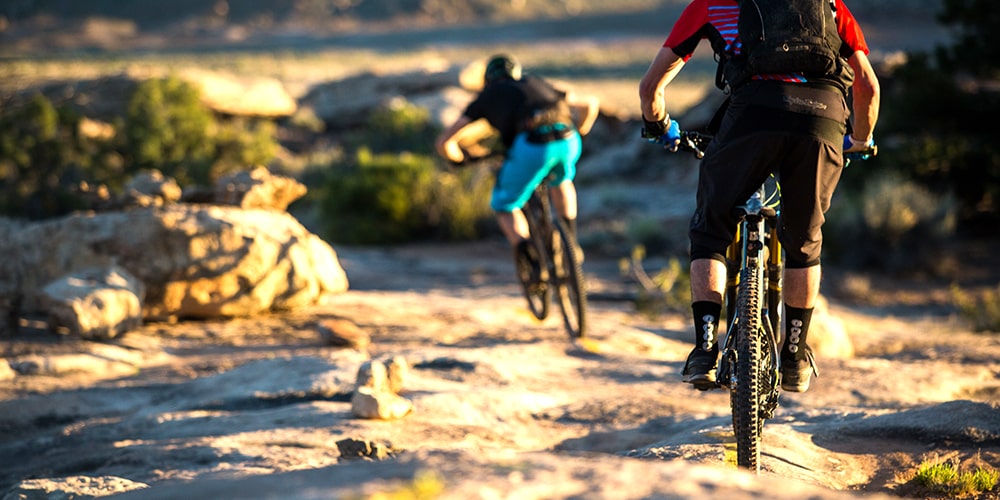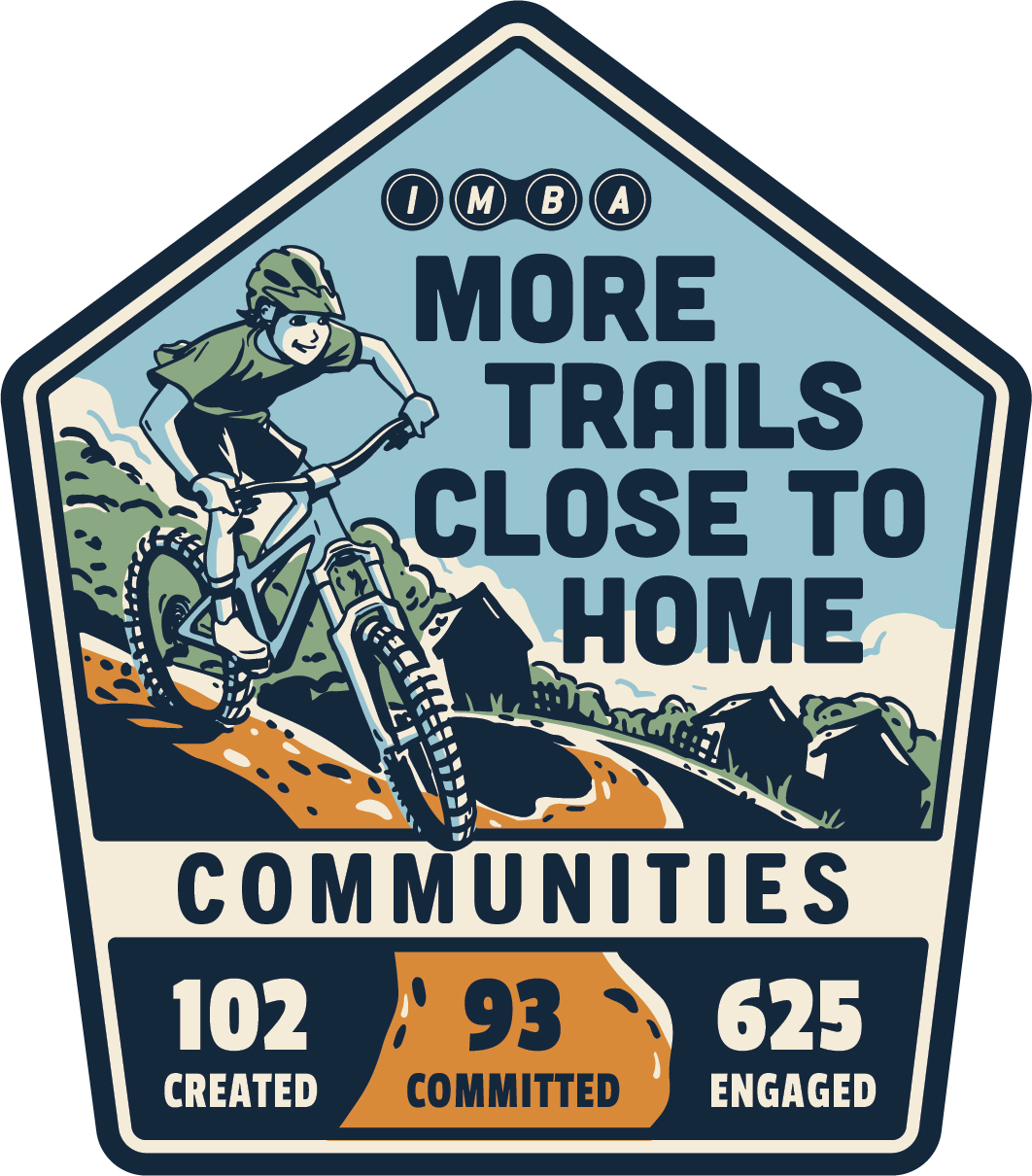Celebrating Women’s Mountain Biking Day 2025
Advocacy starts with strategy. From letter writing campaigns, to educational outreach, to testifying in a public forum or before policy makers, to social media campaigns or “Slacktivism,” all the ways of doing advocacy start with strategizing. But where do mountain bike advocates begin in getting organized around their issues and the presence they want to have in the minds of policymakers? Let’s dig in.
Getting Organized Around Your Issue
Ask a professional mountain bike advocate anywhere in the country how they got started and you’ll likely find that most began their advocacy efforts in response to a threat. Some of these threats could be:
A new housing development or shopping center is proposed on municipally-owned property that threatens to eliminate public open space where mountain bikers ride and practice.
An oil or gas company applies for extraction permits in a forest area that would require re-routing and re-building of miles of trails.
Alternative ideas for areas where new mountain bike trails and multi-use trails are planned.
Federal or state policy changes that would prohibit mountain bikes on existing multi-use trails.
Dissolution of long-standing collaborative partnerships related to insurance for events or trail maintenance can threaten access for mountain bike communities.
Whatever the situation, when places and opportunities to ride are threatened, mountain bikers respond with advocacy action.

If You’re Not At the Table, You’re On the Menu
If you want to influence a decision, you have to be present at the negotiation table. If you’re not there, your rights and interests are likely to be ignored and may even be cannibalized by the other stakeholders at the table. You’ve got to make sound to be heard.
Mountain bikers aren’t immediately invited to the table because of a few naturally occurring reasons. Although in most communities, mountain bikers outnumber horseback riders, we are a relatively small population in the context of all outdoor recreation enthusiasts and sportsmen and participation translates to dollars for the economy. Money talks – you need a license to hunt and fish. In most cases, those funds go directly to your state, and sometimes the federal government to fund conservation, restoration, and public land agencies. We don’t need licenses to ride mountain bikes. Unless policymakers are riders themselves, the perspectives of mountain bikers often don’t make it into conversations without some advocacy action.
Another reason mountain bike advocates are not naturally at the table is because most of us usually identify in the middle or in the “grey” on a lot of issues. Until our access or opportunities for riding are threatened, our worlds are not black and white. Most mountain bikers are more than just mountain bikers. We care about the environment, our communities, and myriad issues related to outdoor recreation and conservation. WE know that, but sometimes leaders and policymakers don’t.
If there is an issue related to protecting nature, 9 times out of 10, mountain bikers young and old are supportive. So we stay quiet and decision makers forget we exist. It’s that tenth time, sometimes late in policy conversations when the threats to trails and mountain bike access occurs when we move out of the grey area and have to figure out how to get into the conversation to protect our interests.
So, how do we get invited into conversations that impact ourselves and other riders, our teams, and our trails?

Strategy: Relationships
Perhaps the most challenging part of mountain bike advocacy is staying abreast of all the issues and opportunities that may impact riders, riding, and trails in a community, a state, and even across the nation (in addition to homework, race and practice schedules, jobs, families, and friends). One of the most impactful ways that mountain bicycling advocates stay in the know is by earning a position in the minds of local leaders and committing to a consistent presence at their local, municipal leadership meetings. And this isn’t just for us old salty dogs (adults).
Get to Know Local Policymakers
The people who hold positions like mayor, county commissioner, and city councilperson are just that: people. They have homes, sometimes families, friends, jobs, passions, and interests.Treat them like people first, get to know them, and allow them to get to know you and your team.
Write to your local leaders. Introduce yourself, your family, and your connection to the community you share. Share your role within the community as well as your interests. Offer yourself and/or your team up as a subject matter expert when it comes to mountain biking and/or trails. Thank them for the resources and support that exists in your community for mountain biking and trails. If you are interested, invite them for an in-person conversation where you ride, race, or train.
Here are a couple of fictional example letters: one for youth advocates and one for coaches and adult MTB advocates.
Letters can be sent as emails, through online portals, and snail mail. Although it seems “old school,” this type of communication is a common way to get in touch with local, regional, state and federal leaders and policymakers, and their staff. Written communication is a soft first step and should be followed up with additional letters and emails, and with in-person or online meetings.
Attend meetings of local leaders. Whether or not an issue related to trails or mountain biking is on the agenda, but especially when one IS, mountain bike teams and organizations can attend meetings of their county commissioners or city councils. Although these meetings may seem exclusive and even boring, showing up will help your county commissioners, mayors, and city council people remember that you are out there. Meeting schedules, agendas, and locations are always available on the websites of your local leadership and municipalities websites.
Pro Tip: Seem daunting to bring 30 middle schoolers into a City Council meeting? Break up your team! Pair one or two younger riders and their parents with one or two high school riders and divide up the meeting calendar. Showing up as small groups of representatives of your larger teams and organizations is still powerful. If there’s an item on the agenda that is really important to your whole team, then invite everyone and experience the power of numbers.
Regional and Statewide Partnership and Organization
NICA provides a great example of statewide organization for development of young riders and the trail stewards of tomorrow. You can and should lean on your statewide league and other teams in your community for help and partnership when it comes to local and regional issues. Examples of when you should engage with these teams:
Proposing new trails? Invite the neighboring teams that will ride and race on your new trails to support your initiative with letters, presence at meetings, or in online advocacy campaigns.
Trails being threatened by new permitting? Invite EVERY TEAM YOU RACE AGAINST to help you uplift your concern and desire to protect the great places you ride. Local issues are rarely just local issues.
People often say “the children are our future,” (OK, Whitney Houston said that) but guess what, YOUTH ARE OUR PRESENT, too. Young people, you belong in every step of advocacy from strategizing to in-person advocacy action! Coaches and parents, lean on IMBA and NICA for support in bringing your youth into advocacy and decision making spaces.

Next Up: Opportunity Knocks.
If you ask a professional mountain bike advocate anywhere in the country how they got started leading their team or organization’s advocacy efforts, you’ll likely find that in addition to threats to riding in their communities, the other most impactful situation that inspires advocacy action is opportunity. Mountain bike advocates and advocacy groups that are proactive, committed, and consistent lead change, guide conversations, and ensure that mountain bikers have a place at the table in their communities. Find out more in the next edition of Activating Trail Stewards of Tomorrow: ABCs of Mountain Bike Advocacy.










